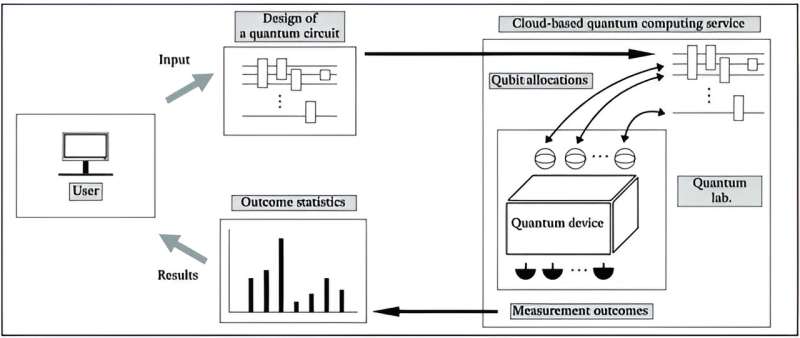The Daily Observer London Desk: Reporter- John Furner
A quantum machine can drastically speed up certain kinds of computation, but only if two or more quantum bits in the machine are entangled—that is, capable of displaying related behavior despite being separated.
Seeking a way for users of cloud-based quantum computing services to detect qubit entanglement, Jiheon Seong and Joonwoo Bae of the Korea Advanced Institute of science and Technology developed and tested an entanglement witness circuit. It works to certify entanglement even when the cloud-based service allows only limited control of the machine. Their research was published in Intelligent Computing.
Researchers want to build circuits that generate entanglement among qubits. However, until they use a circuit, they do not know whether it is an entanglement-generating circuit or not. A costly procedure called quantum tomography can be performed, or the researcher can use an entanglement witness. The entanglement witness is a mathematical function relating two specific qubits and their states. The value of its output signals whether the states of the qubits are entangled or separable.
Unfortunately, it is not always possible to use an entanglement witness without direct access to the quantum machine. In a lab setting, and in the IBMQ cloud-based quantum computing service, a researcher can choose which of the machine’s hardware qubits to allocate to a circuit. In the IonQ cloud-based quantum computing service, the user does not have this level of control, and thus cannot be sure of getting the appropriate values for computing the output of the entanglement witness function.
A researcher’s only input to the IBMQ and IonQ cloud services is a quantum circuit. To address this limitation, Seong and Bae designed special entanglement witness circuits that use the entanglement witness strategy for certifying the presence of entangled qubits. Researchers can use these circuits to detect entanglement using only the measurement statistics output by the service.
They do not need to be able to control qubit allocation. Entanglement witness circuits enable researchers using cloud-based computing to satisfy an “essential requirement” in the process of seeking quantum advantages.
Moreover, the new entanglement witness circuits are built on a recently developed framework called EW 2.0, which is twice as efficient at detecting entanglement.
Seong and Bae describe entanglement detection for two- and three-qubit entanglement-generating circuits, outline two schemes for constructing entanglement witness circuits for entanglement-generating circuits and share results of experiments using the IBMQ and IonQ cloud-based quantum computing services.



